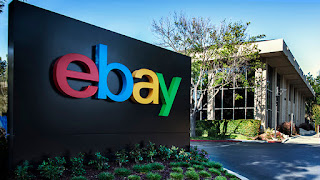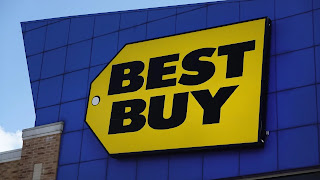In the heart of China’s digital revolution stands Ant Group, one of the world’s most influential fintech companies. Once a humble offshoot of Alibaba Group, Ant Group has grown to become a global force in digital finance, redefining how people save, spend, and borrow money in the digital age. Its story is one of innovation, disruption, and cautionary transformation as it navigates the tensions between tech ambitions and government oversight.
Origins: From Alipay to Ant
The genesis of Ant Group lies in Alipay, an online payment platform launched in 2004 by Alibaba founder Jack Ma. At the time, e-commerce in China was in its infancy, and trust between buyers and sellers was low. Alipay offered an escrow-based payment system where money was held until the buyer confirmed receipt of goods. This model rapidly boosted confidence in online transactions and fueled the growth of Alibaba’s e-commerce empire.
Alipay soon evolved beyond a simple payment processor. As smartphones became ubiquitous, Alipay transformed into a super app, integrating services like ride-hailing, utility bill payments, and investments, all within a single interface. This evolution marked the beginning of a broader vision: to create a digital finance platform that could serve millions of unbanked or underbanked individuals in China.
The Birth of Ant Financial
In 2014, Alipay was spun off from Alibaba and restructured under a new entity called Ant Financial Services Group (later renamed Ant Group in 2020). The rebranding reflected its ambition to become more than a payments firm. It had grown into a comprehensive fintech platform offering a wide range of financial services—loans, insurance, asset management, and credit scoring—largely through its app.
One of Ant’s most transformative innovations was Yu’e Bao, a money market fund introduced in 2013 that allowed users to earn interest on their idle Alipay balances. Within a few years, Yu’e Bao became one of the largest money market funds in the world, attracting hundreds of millions of users and disrupting traditional banks, which were slow to offer similar products with low entry requirements.
Ant also launched Huabei and Jiebei, two consumer and small business credit platforms, providing microloans to users with limited credit history. These products were powered by Ant’s proprietary credit-scoring system, Zhima Credit (Sesame Credit), which used big data and artificial intelligence to assess creditworthiness in the absence of formal credit records.
A Vision of Inclusive Finance
Jack Ma’s vision for Ant was rooted in “inclusive finance”—bringing affordable, accessible financial services to people historically ignored by traditional banks. Ant claimed to use technology to democratize finance, offering services to rural populations, small businesses, and the youth.
Ant’s ecosystem became vast: it included partnerships with over 100 financial institutions, cloud-based infrastructure to support third-party services, and advanced data analytics capabilities. By 2020, it served over 1 billion users worldwide, primarily in China, Southeast Asia, and parts of Africa.
The IPO That Never Was
In 2020, Ant Group prepared for what was poised to be the largest initial public offering (IPO) in history. With plans to list simultaneously on the Shanghai Stock Exchange’s STAR Market and the Hong Kong Stock Exchange, Ant aimed to raise over $34 billion, valuing the company at more than $300 billion.
Investor excitement was feverish. Ant’s dominance in China’s digital economy, combined with its rapid growth and profitability, made it a fintech darling. However, just days before its scheduled debut in November 2020, Chinese regulators suspended the IPO, citing “major issues” with Ant’s regulatory compliance.
This move came after Jack Ma gave a speech criticizing Chinese financial regulators for stifling innovation—a speech that reportedly angered top officials. In the wake of the suspension, Ant was required to restructure as a financial holding company, subjecting it to stricter capital and risk management regulations akin to those faced by traditional banks.
Government Crackdown and Restructuring
The blocked IPO marked the start of a broader crackdown on China’s tech sector. Ant was forced to scale back its operations and work closely with regulators. Its flagship lending platforms, Huabei and Jiebei, were required to share user data with a newly established credit bureau and to partner with state banks to underwrite loans.
Ant’s valuation was subsequently slashed by more than half, and the company quietly shifted from rapid expansion to compliance and restructuring. The company emphasized its transition from a fast-moving tech disruptor to a “technology service provider” supporting the financial industry rather than competing with it.
Despite these changes, Ant maintained its role in China’s digital economy. Alipay still processed trillions of yuan in payments annually, and its integration with local governments, small businesses, and daily life in China remained unmatched.
Global Ambitions and Setbacks
Ant Group also harbored international ambitions. It made investments and acquisitions in Southeast Asia, India, and Africa, aiming to replicate its success in China. The company backed mobile wallets like Paytm (India), Kakao Pay (South Korea), and Wave Money (Myanmar). These ventures gave Ant a foothold in emerging markets with high mobile penetration and low banking infrastructure.
However, geopolitical tensions and increased scrutiny of Chinese tech abroad slowed its global expansion. In 2018, Ant’s attempt to acquire U.S.-based MoneyGram was blocked by the Committee on Foreign Investment in the United States (CFIUS) due to national security concerns. Other investments faced hurdles as regulators across the globe tightened rules on data, privacy, and foreign ownership in fintech.
The Road Ahead
As of 2025, Ant Group remains a key player in China’s fintech ecosystem, albeit a more subdued one. It continues to operate Alipay, which dominates China’s mobile payments alongside Tencent’s WeChat Pay. The company has leaned into areas like blockchain, AI, and green finance, aligning with government priorities while maintaining innovation within regulatory guardrails.
Ant’s story is emblematic of the tension between innovation and oversight in the digital era. It showed how technology could leapfrog traditional systems to deliver massive inclusion and efficiency gains. Yet, it also illustrated the risks of growing too powerful, too fast, in a system where regulatory authority remains paramount.
Conclusion
The story of Ant Group is a dramatic saga of tech triumph and political reality. It reflects China’s unique path in integrating technology with finance, and the broader global struggle to balance innovation with accountability. While the company’s meteoric rise may have been tempered, its impact on digital finance—both in China and globally—is indelible.
As Ant Group adapts to a new regulatory environment and a more cautious pace of growth, it continues to shape the future of fintech, reminding the world that disruption comes not only with opportunity, but also with responsibility.




